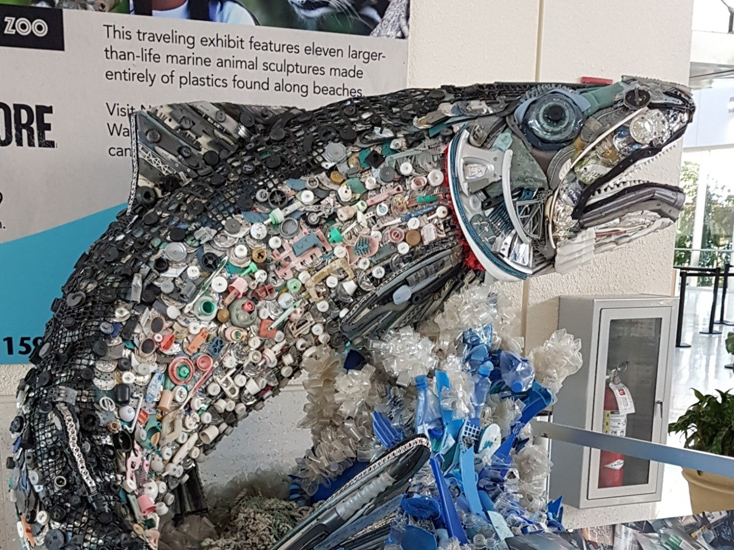Over the holiday season, I visited Sanibel Island on the west coast of Florida; a charming spot that prides itself on its very rustic life style. Bicycles are encouraged for transportation around the island, which does not have a single stop sign and has yet to see a McDonalds’ franchise. Ding Dong Darling is a national nature reserve on the island and, at this time of year, one can see beautiful tropical and highly coloured birds, large fish and alligators that have probably been around for millions of years.
The island was formed from residues from the Southern Appalachian Mountains well to the north that washed into the Gulf of Mexico and settled on the west coast of Florida maybe 5,000 years ago. The likelihood of the island being there in 5,000 years time is slim, we were told by a park ranger, due to the changing nature of sea levels and currents in the area. Nature evidently is a powerful beast, and those who argue that climate change either does not exist or is an inevitable result of solar and global forces outside man’s control, have some justification for their views.
However, on arrival at the local Fort Myers (Regional South West) airport, I saw a stunning sculpture exhibited by Naples Zoo in Florida, which highlights the role man is playing in trashing the earth. It underlined the message that saving the environment, however unfashionable a concept it may seem these days, is a critical issue for everyone and every country of the world. The sculpture, pictured below, depicts a beautiful salmon travelling down streams and rivers to get to the ocean. Looking more closely, one can see that the fish has been fashioned out of plastic and metal waste with which our oceans and seas are already highly polluted.

In a recent blog, the PCI magazine praised the coatings industry for its efforts to ensure that its products are sustainable and minimise harm to the world’s environment. My own PCI blogs over the past six years have highlighted the role that the industry has played in formulating paints without lead or solvents, as well as underlining the important role that coatings play in ensuring that the materials they protect have enhanced lifespans and thereby contribute to an increasing level of sustainability.
The big “but” is that what has taken place to date is simply not enough. Industry has worked hard to optimise where it can, but we are a long way from implementing the vision of the circular economy, which is essential to maintain and improve the world’s environment at a time when the global population continues to increase beyond 7 billion.
The world was shocked a year ago by China’s decision to stop importing vast quantities of plastic waste from the Americas and Europe. In Europe, as elsewhere, dealing with waste has become a prominent issue in the media, with images of increasing waste to landfills and the oceans as the only way forward unless society decides to take radical action. Plastic recycling will require major changes to the way packaging products are designed, collected after initial use and reprocessed. Huge investment will be required for which there simply is no appetite at present. The current climate change talks taking place in Poland do not seem to be getting very far with the prospect that the United States will abandon the initiative in the near future. This is where the coatings industry can lead the way, encouraged by its past environmental performance and supported by its commitment to a more sustainable future for the world.
However, the coatings industry needs help from the political establishment to get to the next stage in global clean up. The American Coatings Association (ACA) has developed environmental standards that are being utilised in green building designs but have not made it to the wider construction markets. Already, there have been impressive initiatives in Canada and the United States to encourage waste paint recycling that have required funding by local, State and Province governments to be successfully implemented. The ACA has an award-winning paint stewardship program, PaintCare, successfully operating in nine jurisdictions. The program helps to fund waste recycling and reuse of leftover architectural paint, which in turn saves local governments a great deal of time and money. Though there are promising efforts and great interest in expanding the program across the country, better understanding of product stewardship programs and their need on the state and local levels is required for such programs to flourish. Although the European Union has now completed a multi-year study under the title PEFCR in which it has taken a magnifying glass to architectural paints and developed helpful environmental data and standards, (ref http://ec.europa.eu/environment/eussd/smgp/PEFCR_OEFSR_en.htm ), there are no signs that legislation across the EU will be implemented.
The need to implement environmental standards across all products and restructure supply chains from cradle to grave and back again on a national and international basis is an essential next step for 2019 and beyond. In the current uncertain environment, the political will on both sides of the Atlantic is simply not there to move to the next level and legislate for change across the board.
That salmon fashioned out of waste products represents a global challenge and an opportunity for change, development and a growing role for industry within society. I sincerely hope that in the future, the political will is strong enough to support all manufacturing industries, not only coatings, to move forward with their efforts to build a circular economy and a more sustainable world.


Report Abusive Comment